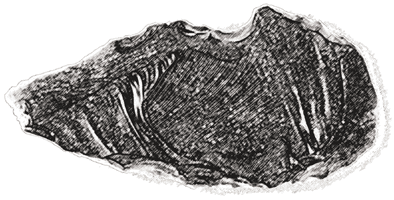
− Toyohiro Nishimoto −
The Jomon culture flourished in Japanese archipelago during 12000 B.P. and 2000 B.P.. It is characterized by hunting/fishing/gathering subsistence and the intensive production of Jomon pottery. Recent researches reveal however that the Jomon people did not totally rely on the foraging of wild resources, but they practiced to some extent domestication of both plants and animals. The Jomon culture had been under influence of various exotic cultures from outside. Current issues in the Jomon researches center around regional and temporal variations of the Jomon culture.
1. The origin of the Jomon culture

The beginning of the Jomon culture is not well known. The end of Paleolithic was marked by the sudden appearance of microblade industry which distributed both in the continent and the archipelago. But the relation of this industry and the Jomon culture is unclear. Refined pottery was already produced in quantity in southern Kyushu around 9500 B.P. where as the pottery making was sporadic in contemporary Hokkaido. The blade industry from Siberia moved into Hokkaido around this time. People still engaged in hunting/fishing/gathering activities as they did in Paleolithic.
2. Regionality of the Jomon culture
The onset of hypsithermal event around 7000 B.P. coincided with the spread of Jomon culture all over the Japanese archipelago. People already domesticated dogs and various plants by this time. As climate deteriorated around 5000 B.P., regionality of the Jomon culture demarcated.
New cultural aspects might have been introduced from the continent by 4000 B.P.. Settlement location had changed and site size decreased. Pottery also became smaller, and were apparently differentiated into fine-made and rough-made ones. Rice cultivation might have been practiced in southern Japan by this time.
3. San'nai maruyama site
The Jomon culture most flourished in northern Japan. Large-scale settlements with the intensive use of ento-type pottery were known in the area during 6000 B.P. to 4000 B.P.. The san'nai maruyama site, one of the representative of this tradition, yields more than 800 pithouses and several hundreds of raised-floor storages. The different types of burials and dwellings suggest non-egalitarian social structure. The presence of many raised-floor storages indicate that the village was sustained by storage and redistribution of abundant resources. The site also shows evidence of active long-distance trade of foods and precious stones.
4. The end of the Jomon culture
Political turmoil in the continent around 2300 B.P. caused a wave of immigrants into Kyushu area. By 2000 B.P., the Jomon culture ended and the Yayoi culture began. The Yayoi culture gradually spread from Kyushu to north. The scale of immigration and acculturation process are currently under the study. The immigrants from the continent also arrived at Hokkaido and produced the zoku-Jomon culture.
Traditional view of the Jomon culture - a sedentary foraging society with the intensive use of pottery - is largely based on the archaeological evidence in northern Japan. The fact that less Jomon sites are known from southern Japan has set the image that the region was less populated during the Jomon period. Recent researches however demonstrate different site location, dwelling style, and the degree of pottery production and use in the north and the south. Future researches would shed lights on the regional and temporal variations of the Jomon culture.